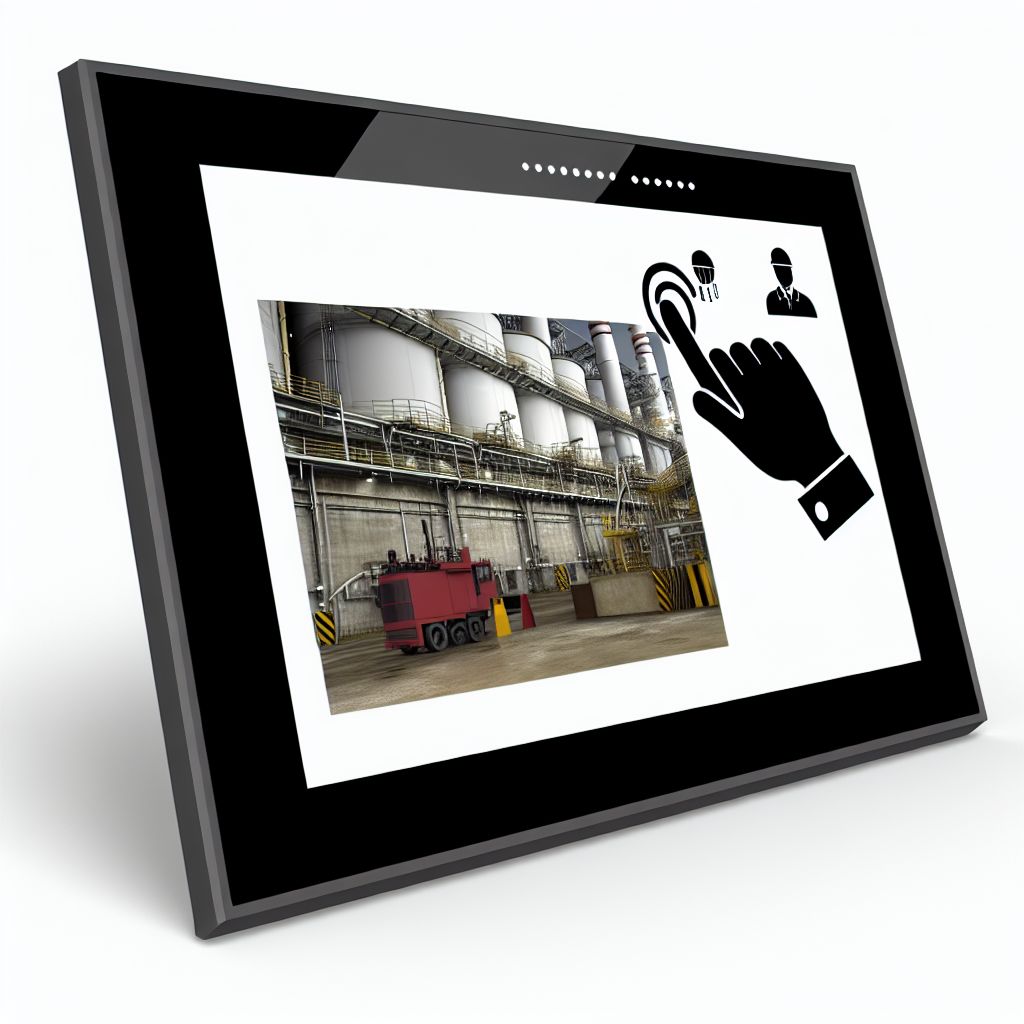English: Touchscreen / Español: Pantalla Táctil / Português: Tela Sensível ao Toque / Français: Écran Tactile / Italiano: Schermo Tattile
A touchscreen or touch screen is the assembly of both an input ('touch panel') and output ('display') device. The touch panel is normally layered on the top of an electronic visual display of an information processing system. The display is often an LCD, AMOLED or OLED display while the system is usually a laptop, tablet,, or smartphone.
In the industrial and business context, "touchscreen" refers to a type of display device that allows users to interact with a computer or other electronic device by touching the screen directly. Here are some examples of the use of "touchscreen" in this context:
- Point-of-sale (POS) systems in retail stores may use touchscreens to process transactions and manage inventory.
- Self-service kiosks in airports, restaurants, and other public spaces may use touchscreens to allow users to access information or complete transactions.
- Industrial control systems may use touchscreens to monitor and control machines and processes.
- Medical devices such as X-ray machines and ultrasound equipment may use touchscreens to adjust settings and view images.
Other similar terms used in the context of display devices and user interfaces are:
- Digital display
- Interactive display
- Graphic user interface (GUI)
- Human-machine interface (HMI)
- Touchpad
- Trackpad
- Mouse
- Joystick
- Keyboard
All of these terms refer to different types of display devices or input devices that are used to interact with electronic devices or software, and that differ in their design, features, and capabilities.
A Touchscreen is an input device that allows users to interact with a computer or any electronic device by touching the screen directly. Unlike traditional input devices such as a mouse or keyboard, a touchscreen enables more intuitive operations by allowing users to select icons, buttons, and other graphical elements with a simple touch. Touchscreens can detect one or more points of contact simultaneously and are commonly used in smartphones, tablets, ATMs, kiosks, and in-car systems. They work through various technologies, such as resistive, capacitive, infrared, and surface acoustic wave, each with its advantages and specific applications.
General Description

In the context of information technology and computer science, touchscreens represent a significant advancement in human-computer interaction, offering a direct and versatile way to control and navigate digital interfaces. By integrating display and input capabilities, touchscreens simplify user interfaces and enhance the usability of electronic devices for a wide range of applications, from personal computing to public information systems.
Application Areas
Touchscreens are used in numerous areas, including:
- Consumer electronics: Smartphones, tablets, and smartwatches.
- Information kiosks: Airports, malls, and tourist information centers.
- Healthcare devices: Medical monitors and equipment in hospitals.
- Automotive industry: Navigation and infotainment systems in vehicles.
Known Examples
Well-known examples of touchscreen technology include:
- Smartphones: Virtually all modern smartphones use capacitive touchscreens for user interaction.
- Tablets: Devices like the iPad have popularized the use of large touchscreens for a variety of applications.
- Interactive whiteboards: Used in educational and corporate settings for presentations and collaborative work.
Weblinks
- information-lexikon.de: 'Touchscreen' in the information-lexikon.de (German)
Summary
Touchscreens have revolutionized the way we interact with technology, providing a more natural and direct method of control than traditional input devices. They have become ubiquitous in modern life, integral to the operation of many devices across different industries. As technology advances, touchscreens continue to evolve, offering higher precision, responsiveness, and new functionalities like pressure sensitivity and gesture recognition.
--
Related Articles to the term 'Touchscreen'
| |||||
| 'Mouse' | ■■■■■■■■■■ | ||||
| Mouse: A "mouse" can refer to several different things. Here are some examples: . . . Read More | |||||
| 'Displays and Electronics' | ■■■■■■■■■ | ||||
| Displays and Electronics in the industrial context refer to the wide range of electronic components and . . . Read More | |||||
| 'Hand-held' | ■■■■■■■■ | ||||
| Hand-held: A mobile device (also known as a Handheld computer or simply handheld/hand-held) is a small, . . . Read More | |||||
| 'Display' | ■■■■■■■ | ||||
| Display: In the industrial, industry context, a "display" refers to a device or a device component used . . . Read More | |||||
| 'Smartphone' | ■■■■■■■ | ||||
| Smartphone: A smartphone (or smart phone) is a mobile phone with an advanced mobile operating system. . . . Read More | |||||
| 'Interface' | ■■■■■■ | ||||
| Interface: In an industrial or industry context, an "interface" refers to the point of connection or . . . Read More | |||||
| 'Stylus' | ■■■■■■ | ||||
| Stylus in the industrial context often refers to a small tool used for inputting Data into a machine . . . Read More | |||||
| 'Tablet PC' | ■■■■■■ | ||||
| Tablet PC pertains a personal data assistant, a Telephone, or any device which is configured to process . . . Read More | |||||
| 'Controller' | ■■■■■ | ||||
| In the industrial context, a controller is a device that manages and regulates the operation of machinery, . . . Read More | |||||
| 'Android' | ■■■■■ | ||||
| In the industrial and industry context, Android refers to a mobile operating system developed by Google. . . . Read More | |||||
